

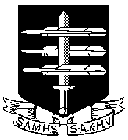 The South African
The South African
Those with even a passing awareness of South Africans' participation in the WW1 air war will know the name of Andrew Beachamp-Proctor, but it's a fair bet that only the afficionados will be aware of D’Urban Victor Armstrong. Yet, as the pre-title to this article hints, he enjoyed a high reputation among his fellow airmen.
Early Days
Armstrong's parents, George and Edith, had travelled extensively looking for a place where putting down roots would feel 'right'. Finally, they discovered Natal and its potential as a place to grow sugar cane. They prospered, making their home in Springfield Road, Durban. In due course of time, in July 1897, a son was born, whom they christened D’Urban Victor (the choice of name, we could assume, made in gratitude to the town that provided the haven they sought). Little is known of Armstrong's early life, but we do know he was educated at Natal's leading school, Hilton College, as befitted the scion of a well-off Durban family.
While there, he became fascinated (along with many others, of course) by the aerial demonstrations put on in 1911 by an ex-Hilton man, Evelyn 'Bok' Driver. His flights, in a rudimentary Blériot-type machine, were among the first, if not the first, examples of sustained flight ever seen in South Africa, and presented the teenage Armstrong with what must have seemed to him the barely believable sight of a newly opening frontier awaiting further conquest.
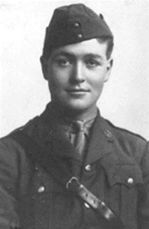
D'Urban Victor Armstrong
The novice flyer
As Armstrong approached the end of his teen years, the Great War broke out, and in 1915, at the age of 18, he was called up. He soon managed to get himself accepted into the fledgling South African Aviation Corps, a freshly minted unit formed only in January of that same year.
It is clear that DVA (as I will refer to him henceforth, for convenience) took immediately to flying, like the proverbial duck to water. He displayed an instinctive touch and an almost superhuman judgement as to what was possible and what was not in the way of aerial manoeuvres. He dared to loop-the-loop in one of the staid and steady BE2c training machines - impressive for a novice! In 1916 he was posted to 60 Squadron, then in process of forming at Gosport (official formation date: 30 April of that year).
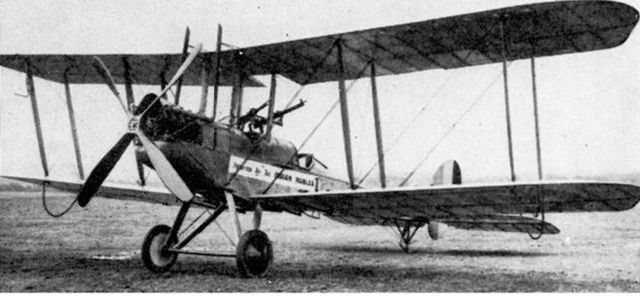
BE2c (Wikipedia)
The aircraft on which DVA trained
and in which he also looped
Off to war
In early June the squadron was despatched to France, equipped with the by-then rather primitive Morane-Saulnier N machines. These were mid-wing monoplanes that used the increasingly (if not completely) out-of-date process of wing-warping to achieve lateral control. They did have a streamlined shape, however, their tapered fuselages leading to a prominent cone-shaped propellor boss (or 'spinner'). hence their nick-name: "Bullets". (However, this spinner shielded the cylinders from airflow in flight, leading them to overheat; by the time 60 Squadron was formed these spinners had been removed.)
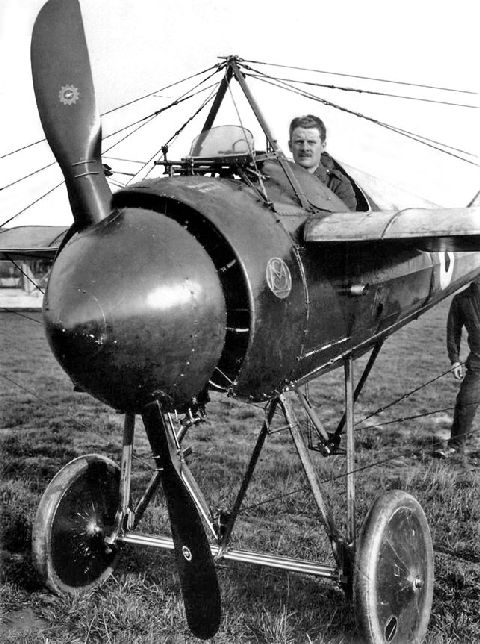
Morane-Saulnier type N with large propeller boss,
or 'spinner', removed from most examples during 1915.
(Wikipedia)
The Morane-Saulnier N was an early-design 'scout' - what we would now call a fighter. equipped with a single forward-firing Vickers machine gun. More evidence of their 'primitiveness' was the absence of any interrupter gear.* They relied on steel deflector plates attached to each propeller blade to prevent the self-inflicted disaster of shooting these off when the gun was fired. There were instances when this didn't work too well.
By late June the squadron was heavily involved in trying to clear, and keep clear, the skies above the Somme front from enemy aeroplanes. Seriously outclassed by the German planes opposing them, within six weeks the squadron was almost completely destroyed, with only four pilots still operational. It was withdrawn for rebuilding, and its Moranes were gradually replaced by the far nimbler and more reliable Nieuport 16s. DVA was unlucky enough to be among the last, perhaps even the last, of his reconstituting squadron to receive one, and meantime had to soldier on in his "Bullet" until September. It was in his Nieuport that DVA scored his first 'kill', downing an Albatros D1 over Havrincourt. (Later, the squadron would become known as one of the 'top' squadrons on the Western Front, home to no less than 26 Aces, including the two VC winners, Albert Ball and 'Billy' Bishop.)
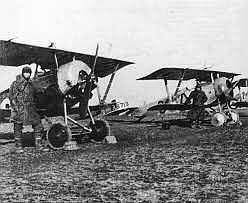
Nieuport 16 and 17 of 60 Squadron
(Wikipedia)
Ferryman
At the end of seven months on and near the front lines, DVA was reassigned for six months to the task of ferrying new machines from Britain to units in France, as well as between units. During this time he gained experience of flying a range of aircraft, as well as experience of flying in all except the most extreme weather conditions. It is recorded that he flew across the English Channel 88 times (an average of about one crossing every two days). It is a measure of the rapidity with which aircraft design was advancing that a mere two years earlier, this number of crossings by one man would have been regarded as heroic, and borderline suicidal, as indeed it would have been.
Armstrong meets the Sopwith Camel
German bombing raids on England (first with airships, then with what were, for the time, heavy bombers) meant that despite the demands of the Western and other fronts, increasing numbers of squadrons were created for, or transferred to, Home Defence. DVA was assigned to such duties after his ferrying work. He appears to have spent time briefly with 39 Squadron, subsequently moving in summer 1917 to 44 Squadron.
This unit was equipped with the notorious Sopwith F1 Camel. This aircraft featured a powerful rotary engine. (A technical digression: instead of having fixed cylinders and a rotating crankshaft driving the propellor, as in numerous other aircraft designs of the time, and as in conventional modern cars where the crankshaft drives the wheels, in a rotary engine the crankshaft is fixed, and it is acirclet of cylinders, connected directly tothe propellor, that spins around the crankshaft. This makes for a fatter, but shorter, engine that doesn't require such a long aircraft 'nose' to accommodate it. But the spin of the cylinder assembly tends to impart a similar spin to the whole aircraft. Controlled, it makes for a very nimble aeroplane, able to 'flick' away instantaneously from an assailant in what is now usually known as a horizontal roll. Uncontrolled, it flicks the unwary pilot's machine over on take-off or landing with potentially fatal consequences. It can also 'flick over' in flight if pilot concentration lapses.)
It was DVA's instinctive feel for the rotary engine's characteristics (and the inherently unstable design of the Camel, meaning it responded in an instant to the merest touch on the controls) that meant he was able to become one with the Sopwith Camel and, in a word, bend it to his will. And hence it was in the Sopwith Camel that he began to build his reputation as a consummate aerobatic ace. Was his love of extreme stunting just exhibitionist dare-devilry? or teenage rebelliousness? or a genuine expression of his love for flying?
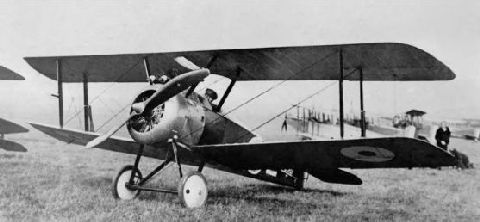
DVA in his Sopwith Camel
(Annette Carson collection, originally from DVA personal collection)
Whichever it was, it was impressive. Major Oliver Stewart, himself an enthus iastic aerobatic flier of no mean ability, later recorded his impression on first seeing a display of DVA's skills: "I received a shock such as no exhibition of aerobatics has ever given me before or since. For I believe I am right in saying that Armstrong was the first to introduce really low aerobatics. He flew across the aerodrome, the wheels of his machine skimming the grass. Suddenly, yet with- out any jerk, the machine reared up, turned completely upside down without raising itself above the level of the shed roofs, and flattened out with the wheels again skimming the grass" He later remarked that DVA "had the hands of a surgeon". This manoeuvre, of performing a flick roll when coming in to land while only 10 or 15 feet (3-4.5 metres) above the field, and before putting his wheels down on the grass, seems to be one he was well known for.
A fellow officer described this feat as "aerobatics such as I had never seen previously and, I am certain, shall never see again." An American aerobatic pilot was also in awe of one of DVA's variations on this manoeuvre: "Armstrong would come diving down at the field, level off about two feet from the ground, pull up into a loop, and when he reached the top, he would roll out and go on his merry way - the finest acrobatic pilot I have ever seen" Astonishment among fliers continues to this day.
DVA showed an uncanny judgement over just how close he could come to catastrophe without actually putting a foot (a wing?) over the line. It was this in particular that made his flying and stunting remarkable. As already noted, he performed many of his acrobatic manoeuvres insanely (or so it seemed) close to ground level.
Another eyewitness reported DVA's spectacular arrival at a new, previously unvisited airfield. A line of Camels was parked to one side, from which one machine had departed, leaving a Camel's-width gap. DVA proceeded to perform a loop, passing through this gap at the low point of the manoeuvre, his wheels almost brushing the grass. And then did it again. The witness took the trouble to measure the gap: DVA had only about five feet (1.5 metres) of clearance for each wing tip. He had judged it precisely.
The famous fighter pilot, 'Billy' Bishop also saw DVA give a demonstration of his flying skills, "and it was beautiful... I doubt if any person will ever equal him as a stunt pilot". And later, "He was possibly the most wonderful pilot in the world. We all looked on him as such, and although I have seen all of our best pilots fly, and the best of the French and Italian, I have never seen anything to equal the exhibitions of flying he used to give."
"A brilliant pilot of exceptional skill. His success in night operations has been phenomenal; and the services he renders in training other pilots is of the greatest value, personally supervising their flying and demonstrating the only successful method of attack by night. On the night of 10-11th September [1918], learning that an enemy aeroplane was over our front, he volunteered to go up. The weather conditions were
such as to render flying almost impossible, the wind blowing about fifty miles an hour, accompanied by driving rainstorms; despite this, Capt. Armstrong remained on patrol for over an hour, his machine at times being practically out of control. The foregoing is only
one of many instances of this officer’s remarkable skill and resolution in night operations."
[Supplement to the London Gazette, 3 December 1918 (31046/14318)]
Aerobatics - not mere Stunting
Aerobatics - in this specific case often referred to as "Camelbatics" - was not purely a spare time amusement. The ability to manoeuvre (if that is not too pedestrian a word) adroitly and rapidly in the endless dogfights that took place in contested skies could mean the difference between success and failure, between life and death. From 1916 onwards, enlightened instructors - and gradually the rest - increasingly taught the skills of aerobatics to new pilot recruits to arm them for what awaited. (A leading figure in the 'push' to incorporate such teaching into training regimes was Capt. Robert Smith-Barry who, coincidentally, had been a flight leader in 60 Squadron and later its CO during DVA's time there.)
Though the agile Camel would turn out to be one of the RFC/RAF's most successful fighters, in its early days too many novice (and some not so novice) pilots fell - sometimes fatally - foul of the Camel's overly nimble characteristics. Among RFC pilots a dark reputation began to over take the aeroplane, with damaging consequences for morale. Since by now DVA's skill in handling the Camel was becoming known to Authority, the latter deemed that he become a 'demonstrator', visiting training units to teach, show, and convince new pilots that the Camel was an asset, not a death sentence.
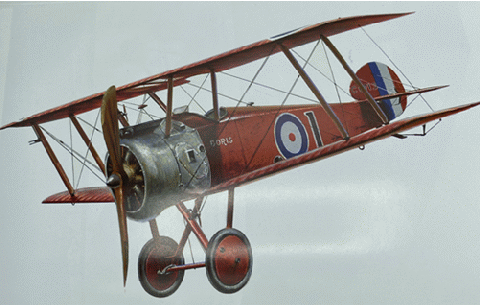
A Drawing of a Sopwith Camel,
showing the arrangement of cylinders in a rotary engine.
The front cover of this issue featured this photograph.
Night Flyer on the Home Front
Flying with astonishing, instinctive precision was not DVA's only claim upon history's notice, for Home Defence inevitably meant night flying, and in 44 Squadron his natural ability with the idiosyncratic Camel led him to become a leading practitioner of night flying's challenging skills and techniques. In addition, he displayed great willingness to pass on these skills to fellow pilots. As a result, 44 Squadron earned some fame for pioneering the use of the Sopwith F1 Camel in the night-fighter role.
Dull-coloured bombers on a dark night were not easy to find, given that the only aids for the pilot, besides his own eye-sight, were the often vague location reports from ground observers (and listeners), and the occasional lucky hit by a searchlight. It made for many long and frustratingly fruitless sorties by the night-fighter pilots, scouring a darkness that seemed to hold no reward for their efforts. It also meant that such sorties might be undertaken in bad flying weather, on the basis of observer reports that could well be mistaken but had to be followed up. It was, in part, DVA's willingness to undertake this gruelling and often unrewarded work that led to his later award of the DFC in October 1918 (when he was back above the Western Front) - see box. After his stint with 44 Squadron, DVA was transferred to 78 Squadron (another Home Defence, Camel-equipped unit) as a Flight Commander.
Night flying on the Western Front Finally, in June 1918, after two tours of Home Front duty, and now a Captain in the Royal Air Force, he was posted to the newly forming 151 Squadron, again a Camel unit, and the first one intended as a night bombing and interdiction formation for the Western Front. (Incidentally, 151 was not part of the so-called Independent Air Force, forming at about the same time). This time he was moved a further notch up the scale and appointed a Senior Flight Commander (of 'A' flight).
The squadron crossed to France on 21 June, landing at Marquise, shortly flying onto Famechon. Here, a few days later, DVA and his flight were attached to 101 Squadron for 'special offensive duties.' As early as June 29, DVA scored his second victory(and the squadron's first) by downing an LVG-C over enemy lines, and then his third ten days later over Estree.
He still delighted in performing aerobatics: a member of neighbouring 83 Squadron, which Sq 151 members often used to visit, recalls DVA as 'the most brilliant split-arsed pilot.'
After two months of aggressive raids over enemy territory, bombing and shooting up airfields and similar targets, 151 was redirected to defensive operations behind the lines, intercepting enemy bombers.
On 24 August DVA assisted a fellow pilot in downing a Gotha bomber over Arras, being awarded a shared victory for this. In early September, as the Allied lines pushed forward in the 'Hundred Days Advance' towards the Armistice, 151 moved to Vignacourt. Five days after the move, on 17 September, DVA notched up his fifth 'kill' by sending down a Friedrichshafen bomber (referred to as a Gotha in some accounts) that crashed in flames and exploded.
End of the story
On 11 November, an armistice was declared, and all fighting on European battlefields ceased. The release of tension must have been universally felt by all participants, at least on the Allied side. Perhaps this explains why, on the 13th, while performing one of his familiar low level aerobatic routines, DVA seemingly misjudged his moves (a momentary lapse of concentration perhaps?), crashed, and was killed. He was just 21.
DVA was buried in the nearby military cemetery of Tincourt, about 7 kilometres east of Peronne. As post-war battlefield clearance progressed, Tincourt was designated a 'concentration cemetery', to which were brought bodies exhumed from smaller cemeteries and from isolated individual burials in the vicinity, to create a place where the fallen could rest in dignified and properly memorialised peace. Nearly 2000 dead are buried or commemorated there.
DVA lies in Row VI, grave D.9. Does anyone place flowers upon his grave now? Does Durban ever remember one of her astonishing sons?
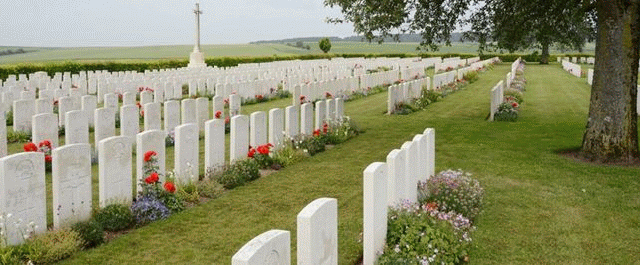
Tincourt Cemetery today
(CWGC website)
Footnote
*An interrupter gear coordinated the firing of the machine gun rounds with the engine revolutions, such that firing was momentarily paused ('interrupted') as each propellor blade passed in front of the gun's muzzle.
SOURCES:
"The Aerodrome" web site at https:// www.theaerodrome.com
CWGCwebsite at https://www.cwgc.org/visit-us/findcemeteries- memorials
Wikipedia entries on D'Urban Victor Armstong and on individual RFC/RAF squadrons 39, 44, 60, 78; 151.
Annette Carson: "The finest acrobatic pilot I have ever seen", article posted 12 December 2019 at the Key Aero websitehttps://www.key.aero/article
A diary history of 151 Squadron, posted at http://www.151squadron.org.uk/
(All the above websites accessed between 29 March and 01 April 2024.)
NOTE:
A book-length biography of DVA, "Camel Pilot Supreme", by Annette Carson,was published by Pen & Sword Books in 2019. It is available from all good bookshops and on-line.
About the Author
See Balloons article
Return to Journal Index OR Society's Home page
South African Military History Society / scribe@samilitaryhistory.org